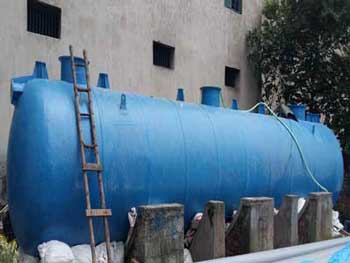
Posted On: 23rd September, 2020
The treatment plants are essential measures for water management. Effluent Treatment Plants (ETP) help treat water in various manufacturing industries. They filter out toxic and non-toxic materials from polluted water and make it suitable for use. It helps in the removal of an excessive number of organic compounds from the solution. It contributes to the removing of major pollutants and thus ensuring health and safety.
Suspended solids and organic matters characterise the raw effluent. The aerobic biological reactor is an essential part of the scheme. It is designed to activate sludge treatment process. This process ensures the stabilisation of the organic matter and various microorganisms.
The oxygen is an essential gas in the process of the treatment as it can ensure the following procedure:
• The oxygen supply can induce oxidation of the organic matter.
• It can also help with the process of nitrification.
• Endogenous respiration of microorganisms.
The effluent treatments process comprises of the following companies;
1. Storage Tank
It is used for collecting and storing liquidated waste from different corners of the industry.
2. Equalise Tank
It is used to equalise the raw effluent emerging from the different processing units.
3. Neutralisation Tank
The function of this tank is to neutralise the raw effluents. These wastes are usually of acidic.
4. Primary Clarifier
This unit is used for the removal of suspended massive particles from the raw effluent.
5. Anaerobic Hybrid Reactor
The function of this unit is to provide anaerobic treatment to the liquidated waste.
6. Aeration Tanks 1 and 2
The function of this unit is to provide aerobic biological treatment to reduce the organic matter of the effluent.
7. Final Clarifier
This is used for separating biological solids from mixed liquor from the first stage of the aeration tank.
8. Discharge by V-Notch
The already treated liquidated waste is discharged into the water bodies by using V-Notch. It is a pipeline with V-shaped ending, which can be also beneficial in scaling the height and discharge of effluent.
9. Sludge drying beds
The function of this unit is to dewater and dry the excessive amount of biological sludge.
Yes, it is a complicated process, and that is why you need experienced professionals. Opt for a reliable effluent treatment plant manufacturer based in Kolkata. They are efficient and skilled. They provide high-quality services at an affordable price rate.